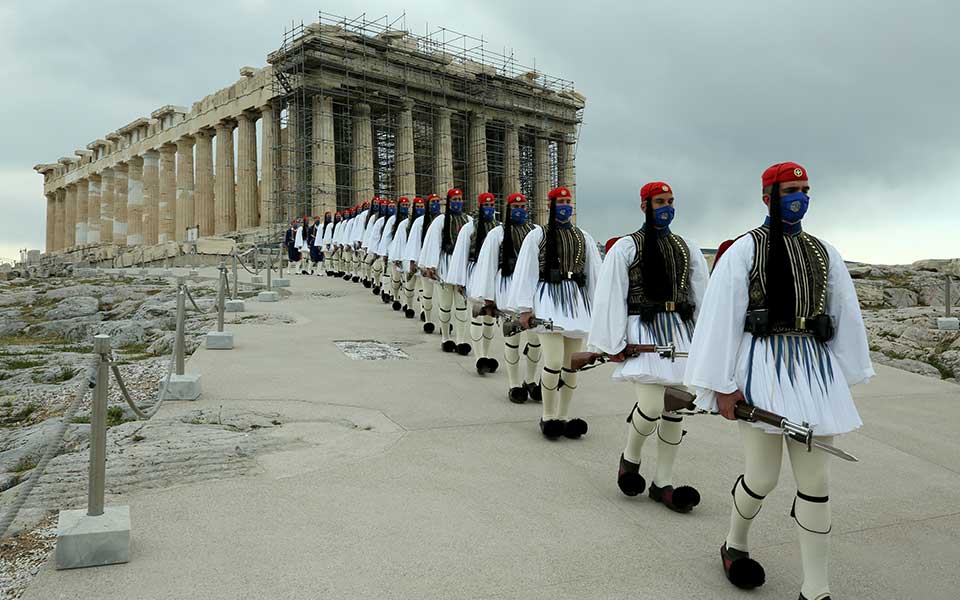The bicentennial of the Greek Revolution is being marked with a plethora of exhibitions and events, some of which are also dedicated to the sartorial side of developments and the symbolism of traditional dress.
A conference being organized by the Hellenic Costume Society in Athens in early October on the history, propagation and use of “national” dress is particularly interesting, especially given how it is still regarded as constituting a part of the national identity, whether in real or stereotypical form, often used to convey “Greekness.”
The conference will focus on the 200 years since the revolution as it seeks to trace how different styles and types of dress were used, what – if any – meaning they conveyed, and how this ties in to the modern Greek identity. It asks what “national dress” means, how it evolved through the decades, how the royals of the newly established Greek state made it de rigeur, and how it functioned as a means of communicating political stances, social commentary and personal ambition.
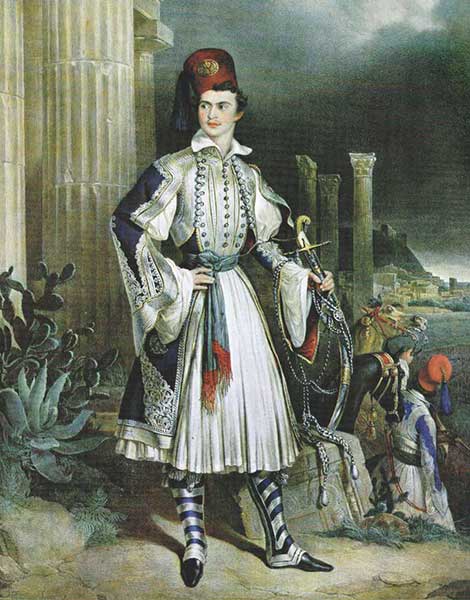
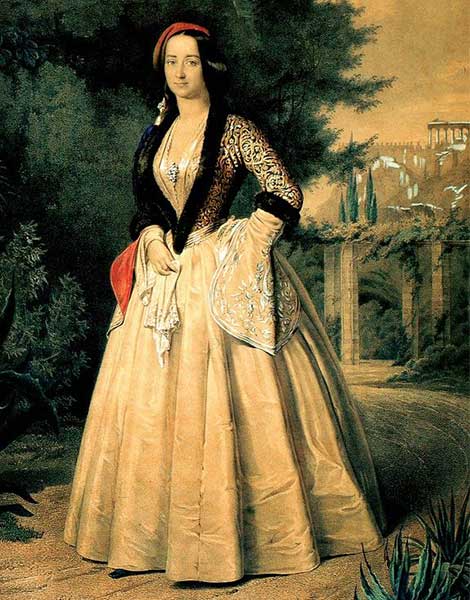
© http://www.geocities.com/henrivanoene/genbavaria01.html
“There is a lot of confusion over what constitutes folk dress – meaning the clothes worn by people in the villages in the 19th and early 20th century – and what we call ‘national’ costumes. ‘National’ costumes are those created by King Otto and Queen Amalia for the purpose of imparting symbolism,” Xenia Politou, the president of the Hellenic Costume Society and curator of the Benaki Museum’s Modern Greek Culture Collection, told newspaper Kathimerini.
Politou notes that the costume with the skirt-like fustanella (similar to the Scottish kilt) was not part of the day-to-day dress of peasants before the creation of the modern Greek state. “It was the uniform of the armatoloi and klephts, of the fighters,” she explains. “After the Greek state was established, it was adopted by Otto and his adjutants, most of whom were also former fighters, and became established as the formal dress for special occasions. Amalia’s costume also gained widespread popularity among the female population, even beyond the borders of Greece.”

© Cundall, Joseph and Howlett, Robert - http://media.iwm.org.uk/iwm/mediaLib//7/media-7758/large.jpg [Photograph Q 71103 from the collections of the Imperial War Museums].
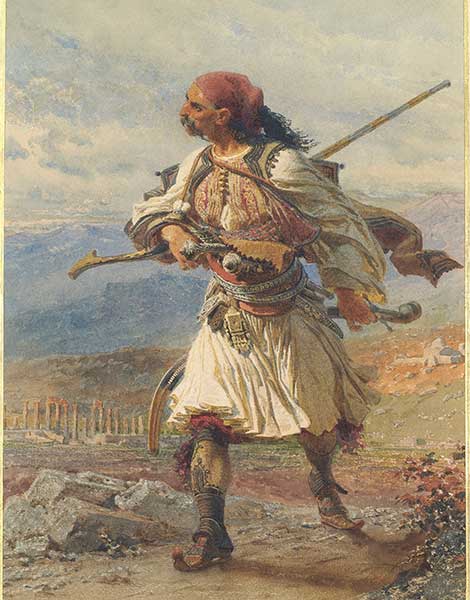
© Carl Haag - ZgE4QyLci8P2uw at Google Cultural Institute
The conference will also address the impact of “national” costumes on the broader Balkan region and how they were depicted in art, chiefly in paintings of peasant idylls, later in bucolic romances in the cinema and later still in the theater. How they are used in parades, school festivals, sports, tourism and commercial brands will also be addressed.
The distinction between local and national that causes so much confusion, says Politou, stems from the inter-war period and the rediscovery of folk art, which the intellectual establishment sought to incorporate into the overall understanding of Greek culture. “That was when some researchers started calling local costumes ‘national.’ Everything became ‘national’ in this narrative of enduring Hellenism and the national consciousness, with elements of folk culture also included,” she says.
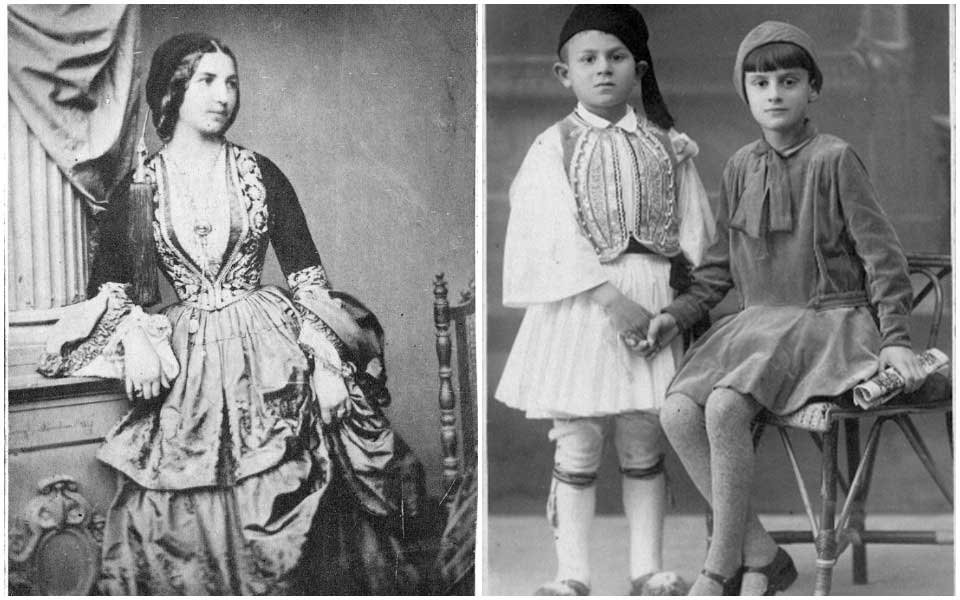
© Benaki Museum Photographic Archive / Peloponnesian Folklore Foundation
How interested in all this are Greeks today?
“We see interest. There are associations that copy the costumes and wear them. Cultural associations, which were subsidized by the state in the PASOK years, have also generated interest. Then there’s the connection with the local element from people who lived in Athens but held onto the customs of their villages. There was a strong rekindling of such interest in the early 1990s and again today.
What we wear is something that invariably resonates with people. In the 1970s, for example, it was a trend of the hippie movement not to wear full costumes but to adopt elements of traditional dress, like loom-woven bags, a folkloric element that today has been branded as ‘ethnic.’”
The Hellenic Costume Society was established in 2003 by Ioanna Papantoniou to bring together people with an interest or active involvement in the subject, with the aim of furthering research and ultimately creating a museum.
This article was first published at ekathimerini.com.

